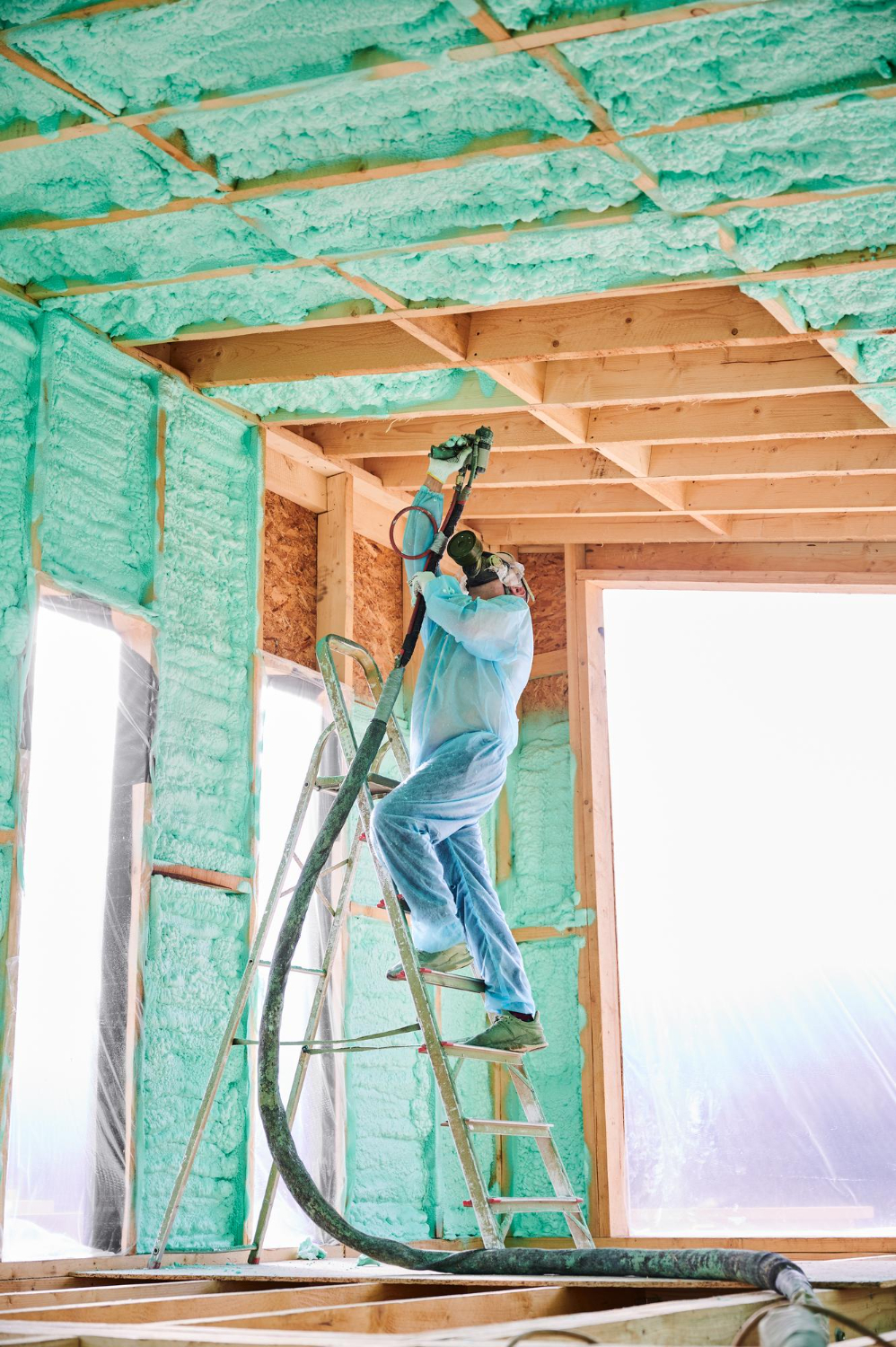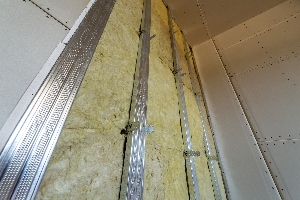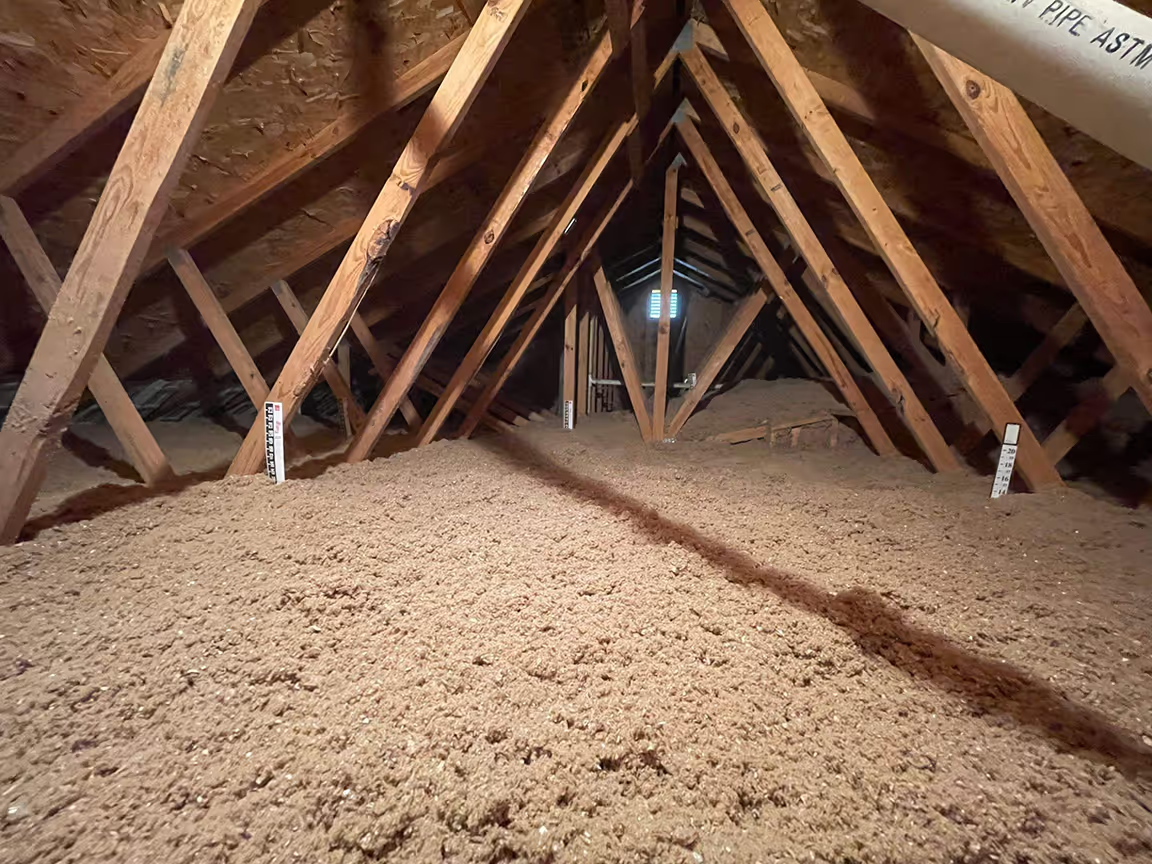Choosing between open cell and closed cell spray foam insulation can make or break your home's energy efficiency and comfort. These two types of foam may look similar when applied, but they work very differently in your walls, attic, and basement.
Open cell foam costs less and provides good insulation, while closed cell foam offers superior moisture protection and higher insulating power per inch. Each type serves different needs depending on your climate, budget, and specific building requirements.
The right choice depends on factors like moisture concerns, structural support needs, and where the foam will be installed in your home.
In this article, you’ll learn how to compare open cell vs closed cell spray foam to choose the right insulation for your home.
Below, we’ll walk through each important aspect.
- What sets open and closed cell spray foam apart
- Where each foam shines in real homes and buildings
- Trade-offs and common questions homeowners ask
- Cost, code targets, and long-term value
- Picking the right installer and next steps
Keep reading! Understanding the key differences between these spray foam options helps homeowners make smart decisions about installation costs, building codes, and long-term performance.
What sets open and closed cell spray foam apart
Open cell foam uses larger, broken bubbles that let air and moisture pass through, while closed cell foam has smaller, sealed bubbles that block air and water. These basic differences affect how well each foam insulates, expands, and protects against moisture.
Density, expansion, and R-value per inch explained in plain terms
Closed cell foam weighs about 2 pounds per cubic foot, making it much denser than open cell foam at 0.5 pounds per cubic foot. This weight difference comes from closed cell foam's tightly packed structure.
Open cell foam expands 100 times its liquid size when sprayed. Closed cell foam only expands 30 to 60 times its original size. This means open cell foam fills gaps and cracks better in one application.
R-value comparison:
- Open cell foam: R-3.5 to R-3.8 per inch
- Closed cell foam: R-6 to R-7 per inch
The EPA classifies open-cell spray foam as low-density (around 0.5 lb/ft³) and closed-cell spray foam as medium-density (approximately 2 lb/ft³), noting that closed-cell products typically deliver higher R-values of about 6.5 per inch.
Closed cell foam provides nearly twice the insulating power per inch. However, open cell foam's greater expansion often makes up for this difference by filling spaces more completely.
How each foam seals air leaks and quiets rooms differently
Both foams stop air leaks, but they work in different ways. Open cell foam's softer texture lets it squeeze into tiny gaps and seal them well. Its flexible nature helps it move with the building without cracking.
Closed cell foam creates a rigid barrier that stops air completely. It forms a vapor barrier that blocks both air and moisture. This makes it better for areas that need strong moisture control.
Sound control differences:
- Open cell foam absorbs sound waves better due to its open structure
- Closed cell foam reflects sound rather than absorbing it
- Open cell foam works better for reducing noise between rooms
Open cell foam typically performs better for soundproofing interior walls and ceilings.
Moisture behavior 101: vapor openness vs added moisture resistance
Open cell foam lets water vapor pass through it. This means moisture can move through the foam and dry out naturally. The foam itself can absorb some moisture but will dry when conditions change.
Closed cell foam blocks moisture completely. It acts as both insulation and a vapor barrier in one product. Water cannot pass through it, which prevents moisture problems in walls and crawl spaces.
Key moisture differences:
- Open cell foam: 15+ perms (vapor open)
- Closed cell foam: Less than 1 perm (vapor barrier)
This difference affects where each foam works best. Open cell foam suits climates where walls need to breathe. Closed cell foam works better in humid areas or below-grade applications where moisture control is critical.
Where each foam shines in real homes and buildings
Different types of spray foam work better in specific areas of homes and commercial buildings. Open cell spray foam excels in spaces where sound control and air sealing matter most, while closed cell spray foam performs best in areas that need moisture resistance and structural strength.
Open cell for attics and interior walls when sound control matters
Open cell spray foam works best in attics where homeowners want to reduce noise from outside. The foam's structure absorbs sound waves better than closed cell options. This makes it perfect for homes near busy roads or airports.
Interior walls benefit from open cell foam when families need quiet spaces. Home offices, bedrooms, and media rooms stay quieter with this type of insulation. The foam expands to fill small gaps that let sound travel between rooms.
Best locations for open cell foam:
- Attic floors and roof lines
- Interior partition walls
- Above drop ceilings
- Around ductwork in conditioned spaces
Open cell spray foam costs less than closed cell options. This makes it a smart choice for large attic spaces where budget matters. The foam still provides good insulation while keeping costs down.
The material expands more than closed cell foam. This means it fills every small crack and gap in wall cavities. Older homes with irregular framing benefit from this extra expansion.
Closed cell for basements, metal buildings, and tight spaces
Closed cell spray foam works best in basements where moisture causes problems. The foam blocks water vapor from coming through concrete walls. This prevents mold growth and keeps basements dry.
Metal buildings need closed cell foam because it adds structural strength. The foam bonds to metal surfaces and helps prevent condensation. Warehouses and garages stay warmer with less foam thickness needed.
Key applications for closed cell foam:
- Basement walls and rim joists
- Crawl spaces with moisture issues
- Metal building walls and roofs
- Exterior walls in cold climates
Rim joists in basements get the most benefit from closed cell foam. These areas often have air leaks and moisture problems. The foam seals these spaces completely while adding insulation value.
Tight spaces with limited room for insulation need closed cell foam. The material provides more insulation per inch than open cell options. This matters in walls where space is limited.
Mixed assemblies that pair both foams for cost and performance
Some projects use both open cell and closed cell spray foam together. Contractors apply closed cell foam to problem areas first. Then they use open cell foam in other spaces to save money.
Basement projects often combine both foam types. Closed cell spray foam goes on exterior walls where moisture matters. Open cell foam works well on interior basement walls and ceilings.
Common mixed assembly approaches:
- Closed cell on rim joists, open cell in wall cavities
- Closed cell for first 2 inches, open cell to fill remaining space
- Closed cell in basements, open cell in attics
Attic spaces can use closed cell foam at roof edges where ice dams occur. Open cell foam fills the rest of the attic space at lower cost. This approach solves specific problems without overspending.
New construction projects benefit from mixed assemblies. Builders use closed cell foam where building codes require vapor barriers. Open cell foam goes in areas where sound control and air sealing matter more than moisture resistance.
Trade-offs and common questions homeowners ask
Closed cell foam costs more but offers superior moisture resistance, while open cell foam needs careful vapor barrier planning. Mold concerns with open cell foam depend largely on proper installation and moisture management.
Downsides of closed cell spray foam and how to avoid them
Higher upfront costs represent the biggest drawback of closed cell foam. It typically costs 50-75% more per square foot than open cell foam.
Installation challenges create additional problems. Closed cell foam expands quickly and creates high pressure during application. This can bow walls or crack drywall if applied too thick.
Limited accessibility after installation makes repairs difficult. Once closed cell foam cures, removing it requires special equipment and creates mess.
Thickness requirements mean closed cell foam needs 2-3 inches for optimal performance. This reduces interior space more than open cell alternatives.
Chemical odors can linger for several days after installation. Some homeowners report sensitivity to off-gassing chemicals.
Avoiding these issues starts with hiring experienced installers. They know proper application thickness and spray techniques. Getting multiple quotes helps manage costs. Planning the installation when you can ventilate the space reduces odor problems.
Does open cell foam need a vapor barrier? Climate and assembly notes
Climate zone determines vapor barrier requirements for open cell foam. Cold climates (zones 6-8) typically need vapor barriers on the warm side of walls.
Building codes vary by location but most require vapor barriers with open cell foam in heating-dominated climates. Check local requirements before installation.
Wall assembly matters more than foam type alone. Open cell foam allows moisture movement, so the wall system must handle water vapor properly.
Vapor barriers go between the drywall and framing in cold climates. This stops warm, humid air from reaching cold surfaces where condensation forms.
Mixed climates create complexity. Some areas need vapor barriers in winter but not summer. Consult local building professionals for guidance.
Smart vapor barriers adjust their permeability based on humidity levels. These work better than standard plastic sheeting in mixed climates.
Proper installation requires sealing all gaps and penetrations in the vapor barrier. Electrical outlets, pipes, and wiring create potential leak points.
Can mold grow in open cell foam insulation? What actually happens
Mold cannot grow on properly installed open cell foam itself. The foam material lacks nutrients that mold needs to survive.
Moisture problems create mold risk around the foam, not in it. Water leaks or high humidity can cause mold on adjacent wood framing or drywall.
Air movement through open cell foam can carry moisture to other building materials. This makes proper air sealing critical during installation.
Temperature differences across the foam can create condensation points. Warm humid air hitting cold surfaces leads to moisture buildup.
Installation quality affects mold risk significantly. Gaps in foam coverage allow air movement and moisture problems.
Prevention requires controlling moisture sources first. Fix roof leaks, plumbing problems, and ventilation issues before installing foam.
Proper vapor barriers in cold climates prevent warm indoor air from reaching cold surfaces. This stops condensation that feeds mold growth.
Regular inspection helps catch moisture problems early. Look for water stains, musty odors, or visible mold around foam-insulated areas.
Cost, code targets, and long-term value
Closed cell foam costs more upfront but delivers higher R-values per inch, while open cell foam offers budget-friendly coverage with lower insulating power. Both types can meet building codes when applied correctly, though the thickness requirements differ based on climate zone targets.
Typical price ranges and what drives the quote
Open cell spray foam typically costs $1.50 to $3.50 per square foot installed. Closed cell foam ranges from $2.50 to $6.00 per square foot.
Several factors affect the final price. Project size matters most - larger jobs get better per-square-foot rates. Wall height and accessibility impact labor costs.
Key price drivers include:
- Total square footage
- Ceiling height and access difficulty
- Geographic location and contractor availability
- Thickness requirements for R-value targets
- Surface preparation needs
Closed cell foam requires more material per square foot because it expands less during application. This denser coverage uses more raw materials, pushing costs higher.
Open cell foam expands more dramatically. This means less material covers the same area, reducing material costs significantly.
Meeting R-value goals without over-spraying
Building codes set minimum R-value targets based on climate zones. These requirements determine how thick the foam needs to be applied.
Closed cell foam delivers R-6 to R-7 per inch of thickness. Open cell foam provides R-3.5 to R-4 per inch. This difference changes application strategies.
Climate zone requirements example:
- Zone 3: R-13 walls, R-30 attic
- Zone 5: R-20 walls, R-38 attic
- Zone 7: R-21 walls, R-49 attic
According to the U.S. Department of Energy, recommended insulation levels vary by climate zone, with wall R-value targets ranging from R-13 in Zone 3 to R-21 or higher in Zone 7. These standards help ensure consistent comfort and energy savings year-round.
For R-20 walls, open cell needs 5-6 inches of thickness. Closed cell achieves the same target with just 3 inches.
Contractors must calculate thickness carefully. Over-spraying wastes money and materials. Under-spraying fails inspections and reduces performance.
Most building inspectors accept either foam type when properly applied to meet code minimums.
Energy savings, comfort gains, and warranty basics
Both foam types reduce air leaks better than traditional insulation. This air sealing creates the biggest energy savings in most homes.
Closed cell foam typically saves 30-50% on heating and cooling costs. Open cell foam saves 20-40% compared to fiberglass insulation.
Comfort improvements include:
- More even temperatures between rooms
- Less drafty feeling near walls and windows
- Reduced outside noise transmission (especially open cell)
- Better humidity control in conditioned spaces
Warranty coverage varies by manufacturer and installer. Most spray foam carries 10-25 year material warranties. Installation warranties typically last 1-5 years.
Closed cell foam maintains performance longer in harsh conditions. Its rigid structure resists settling and moisture damage better than open cell.
Open cell foam may lose some R-value if it gets wet repeatedly. However, it dries out faster than traditional insulation when moisture issues get fixed.
Picking the right installer and next steps
The quality of your spray foam project depends heavily on proper installation techniques and contractor expertise. Professional preparation, equipment standards, and clear project planning ensure you get the insulation performance you expect.
Jobsite prep, thickness verification, and cleanup that protect your home
Professional installers protect your home before spraying begins. They cover furniture, mask windows, and seal off living areas from work zones.
Proper preparation includes:
- Plastic sheeting over floors and belongings
- Temporary ventilation systems
- Weather monitoring for temperature and humidity
Thickness matters for insulation performance. Good contractors use depth gauges to verify foam thickness meets building code requirements.
They measure multiple spots across each surface. Open cell foam typically needs 3-6 inches for proper R-value. Closed cell foam works at 2-4 inches in most applications.
Cleanup separates professional crews from cheap installers. Quality contractors remove overspray from windows and trim. They dispose of chemicals properly and leave job sites clean.
What to ask about equipment, mix quality, and ventilation
Equipment age affects foam quality significantly. Ask contractors about their spray rig maintenance schedule and when pumps were last serviced.
Key equipment questions:
- How often do you calibrate mixing ratios?
- What's the age of your spray equipment?
- Do you have backup equipment on site?
Chemical mixing ratios must stay precise for proper foam curing. Poor ratios create weak foam or strong odors that last for weeks.
Ventilation protects your family during installation. Contractors should explain their air exchange plan and when you can safely return home.
Professional crews test air quality before declaring areas safe. They never rush this safety step to finish jobs faster.
Want a clear plan and price for your project? Terrain insulation can compare both foams and quote fast
Getting multiple quotes helps you understand fair pricing for your project size. Each estimate should break down material costs, labor hours, and cleanup time.
Request quotes that include:
- Square footage calculations
- Foam thickness specifications
- Timeline for completion
- Warranty terms
Terrain Insulation evaluates both open cell and closed cell options for your specific needs. Their experienced team explains which foam type works best in your climate and budget range.
They provide detailed written estimates within 24-48 hours of site visits. Their quotes include all prep work, installation, and cleanup costs with no hidden fees.
Conclusion
Choosing between open cell and closed cell spray foam depends on specific project needs and budget constraints. Both types provide effective insulation but serve different purposes.
Budget plays a major role in the decision. Open cell foam costs less upfront but may require additional vapor barriers. Closed cell foam costs more initially but provides multiple benefits in one application.
Climate conditions matter too. Humid areas benefit from closed cell's moisture resistance. Dry climates can use either type effectively.
The intended use determines the best choice. Residential attics often work well with open cell foam. Basements and crawl spaces typically need closed cell protection.
Professional installation ensures proper application regardless of foam type. Contractors can assess specific needs and recommend the right solution.
Both foam types improve energy efficiency when installed correctly. The key lies in matching the foam characteristics to the project requirements and environmental conditions.
Schedule a professional spray foam insulation quote today to ensure the right type and thickness for your home’s needs.






